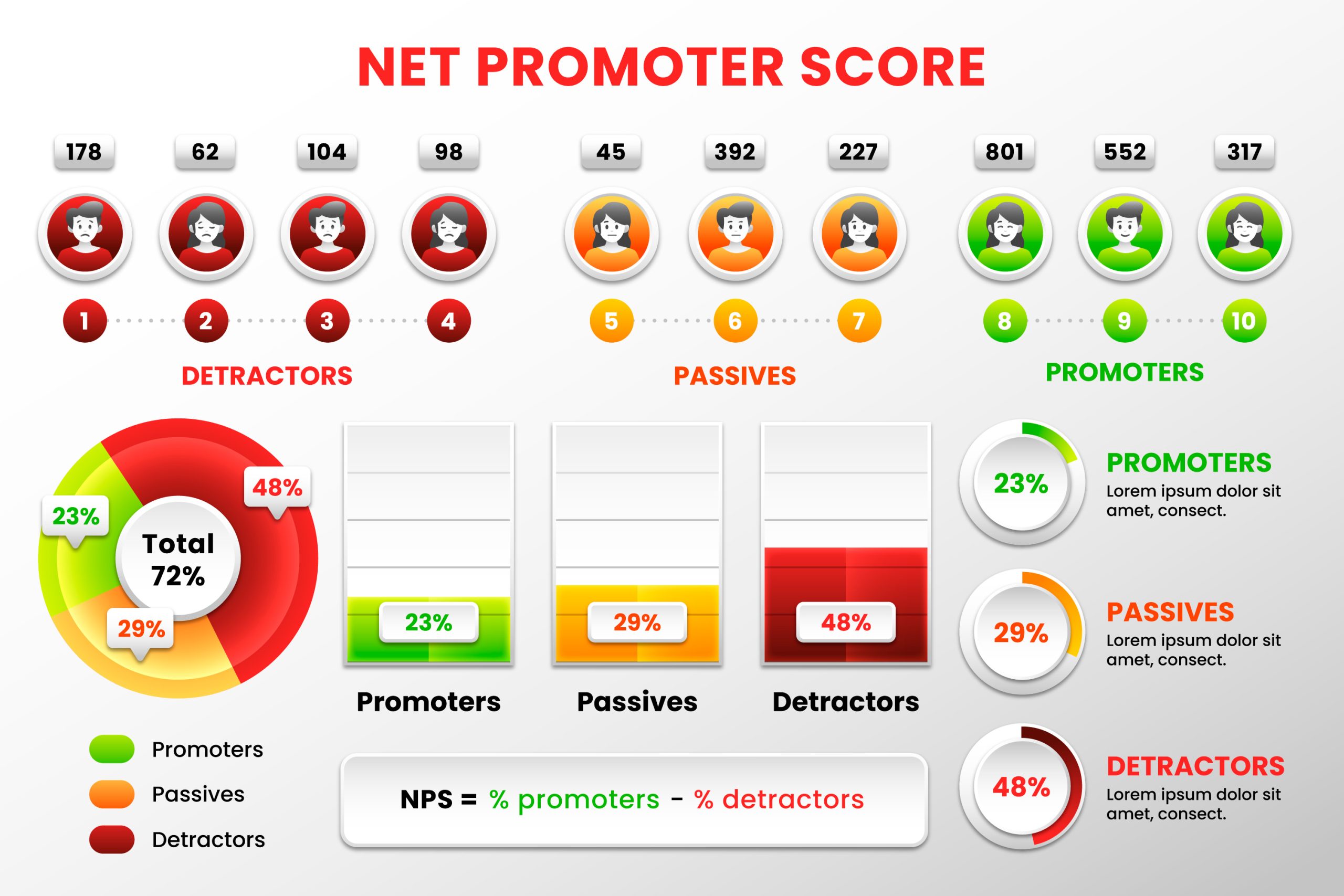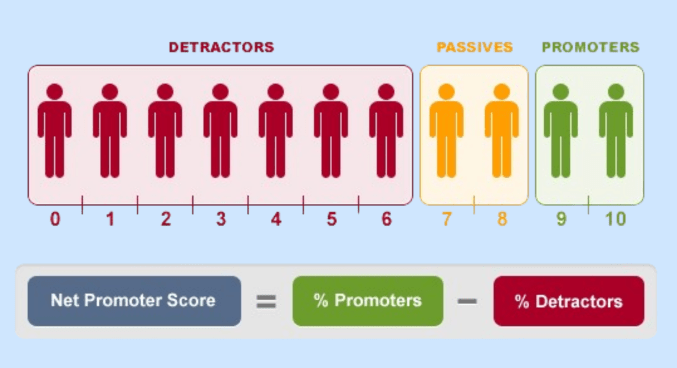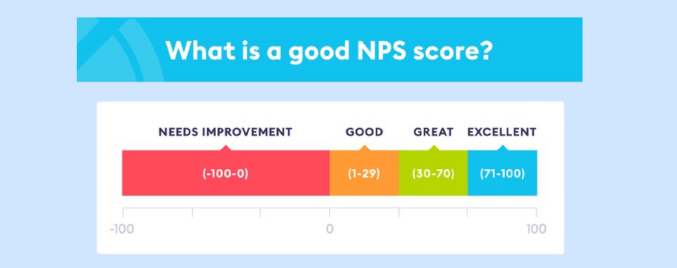Net Promoter Score (NPS): Your Guide to Maximizing ROI

In today’s highly competitive business landscape, understanding customer loyalty and its impact on your bottom line is essential. Net Promoter Score (NPS) has become a crucial metric for gauging customer satisfaction and predicting business growth. By leveraging the Net Promoter Score for maximum ROI, companies can not only enhance customer experience but also drive substantial returns on their investments. But what exactly is Net Promoter Score (NPS), and how can it be used effectively? In this article, we will explore what NPS is, how to conduct a Net Promoter Score NPS survey, what constitutes a good NPS score, and how to calculate it. We’ll also introduce Webtrack 360, a powerful tool that can help you get the most out of your NPS strategy.
What is Net Promoter Score (NPS) and Why It Matters?

Net Promoter Score (NPS) is a customer loyalty metric that measures the likelihood of customers recommending your product or service to others. It’s based on a single survey question: “On a scale of 0-10, how likely are you to recommend our product/service to a friend or colleague?” Respondents are then classified into three categories:
- Promoters (9-10): Loyal enthusiasts who will continue buying and referring others, driving growth.
- Passives (7-8): Satisfied but unenthusiastic customers who are vulnerable to competitive offerings.
- Detractors (0-6): Unhappy customers who can damage your brand and impede growth through negative word of mouth.
NPS is calculated by subtracting the percentage of Detractors from the percentage of Promoters. The result is a score that ranges from -100 to +100. A positive score indicates that you have more promoters than detractors, which is a good sign for your business. But what is a good NPS score? Generally, a score above 50 is considered excellent, while anything below 0 should raise concerns.
How is Net Promoter Score Calculated?

To calculate the Net Promoter Score, you’ll need to conduct an NPS survey. Here’s how the process works:
- Survey Your Customers: Distribute the NPS survey question to your customer base. This can be done via email, on your website, or through Webtrack 360, which specializes in collecting and analyzing customer feedback.
- Classify the Responses: Once you’ve gathered responses, categorize them into Promoters, Passives, and Detractors based on their ratings.
- Calculate the Percentage: Determine the percentage of respondents in each category. For example, if 70% of respondents are Promoters, 20% are Passives, and 10% are Detractors, you have your percentages.
- Subtract and Calculate the NPS: Subtract the percentage of Detractors from the percentage of Promoters. Using our example, it would be 70% – 10% = 60. Your NPS score would be 60, which is considered very good.
Leveraging Net Promoter Score for Maximum ROI
Maximizing ROI using NPS is about more than just calculating a score—it’s about taking action based on the insights that the score provides. Here’s how you can leverage NPS for maximum ROI:
1. Identify Key Areas for Improvement
Your NPS survey results will highlight areas where your business excels and where it falls short. By analyzing the feedback from Detractors, you can identify pain points in the customer journey that need immediate attention. Addressing these issues not only improves customer satisfaction but also reduces churn, which directly impacts your ROI.
2. Focus on Promoters to Drive Growth
Promoters are your brand advocates. By focusing on this group, you can encourage them to spread positive word-of-mouth, leading to new customer acquisition at little to no cost. Incentivizing promoters through referral programs, special offers, or exclusive content can amplify their impact, further boosting your ROI.
3. Use Webtrack 360 for Enhanced NPS Analysis
Webtrack 360 is a comprehensive analytics tool designed to help businesses make the most out of their NPS data. It allows you to track customer feedback in real time, segment your customers based on their NPS scores, and identify trends that could affect your bottom line. By integrating Webtrack 360 into your NPS strategy, you can gain deeper insights and make data-driven decisions that maximize ROI.
What is a Good NPS Score?

Understanding what constitutes a good NPS score is crucial for setting realistic goals. While an NPS score of 50 or above is typically considered excellent, the definition of a good score can vary depending on your industry. For example, a score of 30 might be exceptional in a highly competitive sector, while the same score might be considered average in a less competitive market.
Benchmarking your NPS score against industry standards and tracking its progress over time will give you a clearer picture of where your business stands. Continuous improvement in your NPS score is a strong indicator of a healthy, growing business, which directly correlates with improved ROI.
How to Improve Your Net Promoter Score for Maximum ROI
Improving your NPS score requires a systematic approach. Here are some strategies to consider:
1. Close the Feedback Loop
One of the most effective ways to improve your NPS is by closing the feedback loop. Reach out to detectors to understand their concerns and take corrective action. This not only turns unhappy customers into satisfied ones but also shows that you value their input, which can increase loyalty.
2. Enhance Customer Experience
Invest in improving the overall customer experience. This could mean optimizing your website’s usability, offering superior customer support, or ensuring that your product or service consistently meets customer expectations. Tools like Webtrack 360 can help you monitor customer interactions and identify areas for improvement.
3. Engage with Passives
Passives represent a significant opportunity for improvement. Since they are on the fence about your product or service, engaging with them can convert them into Promoters. Personalized communication, tailored offers, and enhanced customer service can help you move this group up the loyalty ladder.
The Role of Webtrack 360 in Maximizing ROI through NPS
Webtrack 360 plays a pivotal role in helping businesses maximize ROI through their NPS efforts. By providing detailed analytics, real-time feedback, and actionable insights, Webtrack 360 enables businesses to make informed decisions that drive growth. Whether it’s identifying the root causes of customer dissatisfaction or tracking the success of initiatives aimed at improving customer loyalty, Webtrack 360 is an invaluable tool for any business looking to leverage NPS for maximum ROI.
Conclusion
Net Promoter Score (NPS) is more than just a metric—it’s a powerful tool that, when used correctly, can significantly impact your business’s ROI. By understanding what NPS is, how it is calculated, and how to leverage it for maximum returns, you can transform customer feedback into a strategic asset. Tools like Webtrack 360 can further enhance your ability to make data-driven decisions, ensuring that your NPS efforts yield the highest possible returns. Start using NPS today, and watch your customer loyalty and ROI soar.